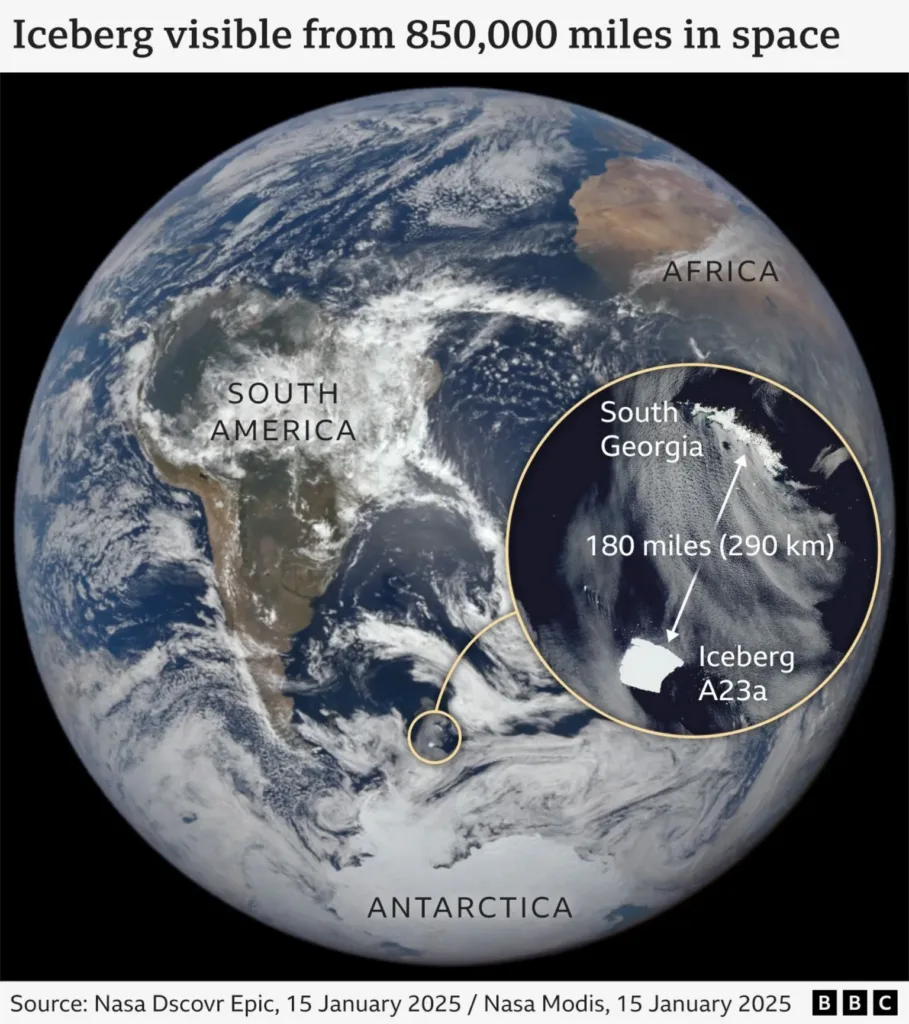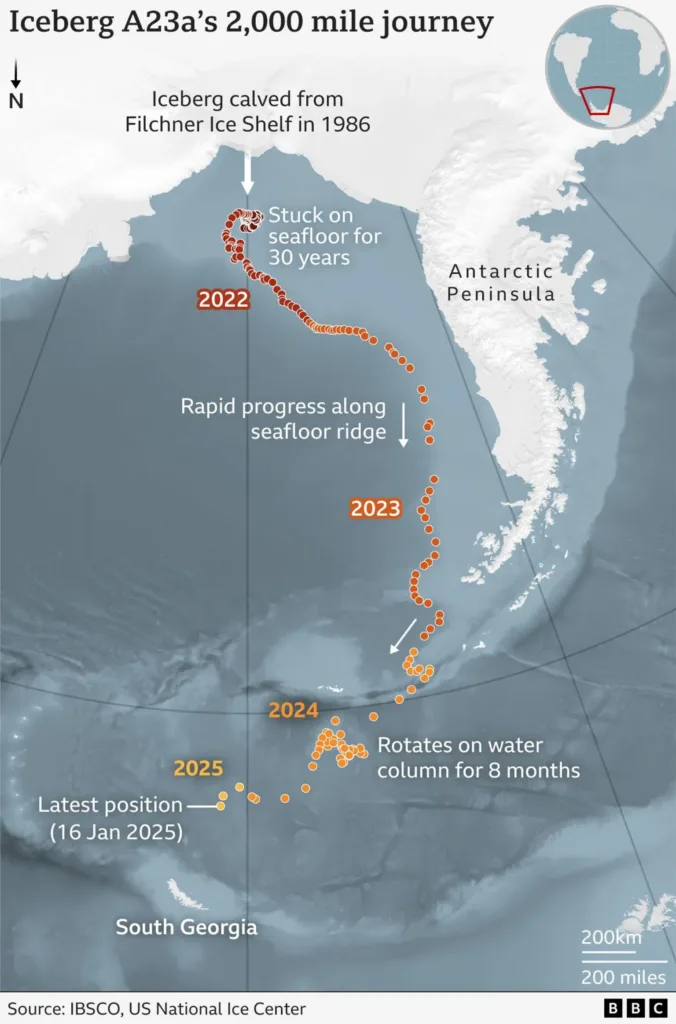The world’s largest iceberg, A23a – which recently broke free from a decades-long imprisonment in Antarctica – is currently on a collision course with South Georgia island. “Icebergs are inherently dangerous. I would be extraordinarily happy if it just completely missed us,” warns sea captain Simon Wallace, speaking from the South Georgia government vessel Pharos. Currently positioned 173 miles from the British territory, this massive hunk of ice is over 3,672 square kilometers – only slightly smaller than the state of Rhode Island (but more than twice the size of London). The iceberg’s journey started in 1986 when it broke off from the Filchner-Ronne ice shelf. There the berg remained, grounded on the Antarctic’s Weddell Sea floor for over three decades. But since breaking free in December, it has been caught in a Taylor column – a vortex of water created by ocean currents hitting an underwater mountain – before starting to head north.
Wildlife at Risk

Mark Belchier, director of fisheries and environment for South Georgia, expressed serious concerns about the world’s largest iceberg heading his way. Historical precedent paints a grim picture, as “countless birds and seals died on South Georgia’s icy coves and beaches when past giant icebergs stopped them feeding“. The territory, home to colonies of King penguins and millions of elephant and fur seals, faces a potentially serious crisis if A23a makes grounds on the continental shelf. In 2004, a similar incident occurred when iceberg A38 stuck around on the continental shelf and resulted in massive wildlife casualties as ice blocked access to feeding grounds. Smaller fragments of ice pose as much of a challenge for navigation and wildlife alike and large ones do, potentially filling bays and fjords and making them inaccessible to animals and vessels alike.
A23a: What Does It Mean If It Hits?

The journey of A23a presents both challenges and opportunities for researchers. A team from the British Antarctic Survey aboard the Sir David Attenborough research vessel recently conducted studies near the world’s largest iceberg. “I saw a massive wall of ice way higher than me, as far as I could see. It has different colours in different places. Chunks were falling off – it was quite magnificent,” describes PhD researcher Laura Taylor. While this particular iceberg’s calving wasn’t linked to climate change, Andrew Meijers, a physical oceanographer, notes that it “appears that it is moving with the prevailing current toward South Georgia”. The iceberg’s massive walls extend up to 1,312 feet (400m), more than four times taller than the statue of liberty, and are slowly weakening because of the warmer water. Scientists are continuing to monitor its trajectory, as whatever it does hit (it will hit something eventually) could significantly affect local ecosystems and maritime operations.
Having massive icebergs around, never mind the worlds largest one, has forced the maritime community to adapt their operations. “Chunks of it were tipping up, so they looked like great ice towers, an ice city on the horizon,” recalls Belchier, describing a previous encounter with iceberg A76. Navigation has become a serious problem, and sailors have to be on constant vigilance. “We have searchlights on all night to try to see ice – it can come from nowhere,” explains Captain Wallace. Andrew Newman from Argos Froyanes fishing company describes the ice having a “huge impact on our operations and on keeping our vessel and crew safe”.
Environmental Impact and Research Opportunities

Laura Taylor’s team has collected valuable water samples from near the iceberg, stating “This isn’t just water like we drink. It’s full of nutrients and chemicals, as well as tiny animals like phytoplankton frozen inside”. The melting process is releasing these elements back into the ocean, and could potentially affecting the carbon storage found in deeper waters. While scientists have already emphasized that this, the largest iceberg break-off in history, was likely part of the ice shelf’s natural growth cycle, they do acknowledge that global warming continue to drive concerning changes in Antarctica and the world.


